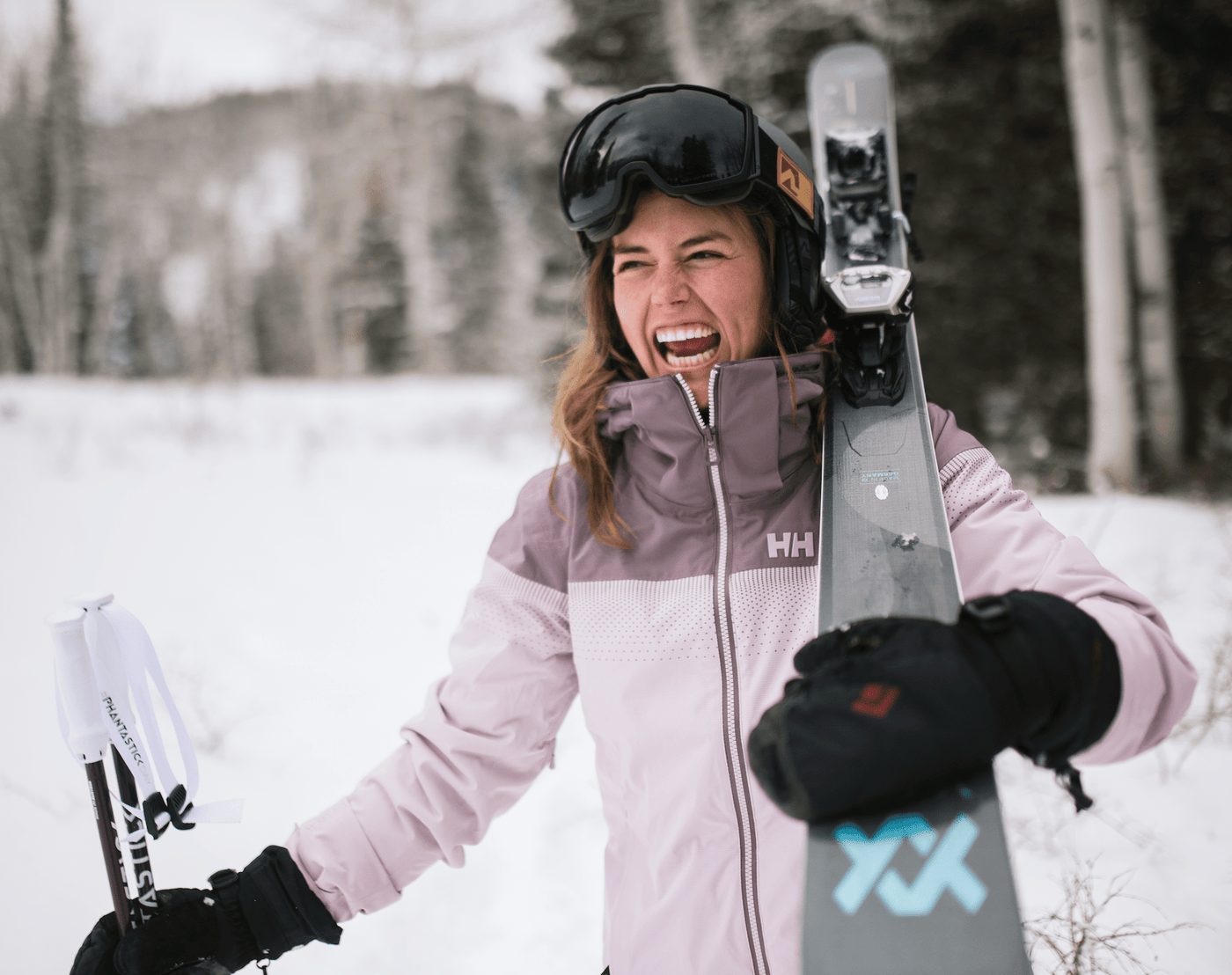A Beginner's Guide to Buying Skis
What to consider when you're buying your first pair of downhill skis:
Choosing skis by terrain and snow type
The first step to narrowing down your choices is to figure out what type of terrain and snow conditions you’ll be skiing in.
If your goal is to ski powder on the west coast, you’ll need a soft and wide ski - typically 100 mm or more - to keep you afloat. For anyone looking to carve groomed runs in Ontario, a narrower, soft carving ski would be your best bet.
Dreaming of dodging pine trees in the backcountry? There’s a ski for that too.

Finding the right ski length for your height
As a general rule, your skis should come up somewhere between your chin and the top of your head. If you have a lighter frame or are just starting out, you should go for a pair that falls on the shorter end of that spectrum.
Longer skis offer stability at high speeds, but can be tricky to maneuver on turns. We don’t recommend you start out with this option unless you’re a pro athlete in another sport.
As a beginner, shorter skis will help you improve your carving technique. They provide easier turn initiations and make parallel turns a breeze.
Check out our handy-dandy Ski Sizing Chart for more detailed information.
Choosing skis by width, shape and flexibility
We recommend beginners in Ontario buy skis between 70 mm to 88 mm underfoot. Narrow skis allow for faster and easier transitions from one ski edge to another. You’ll need a nimble pair of skis to master carving and edge transition on groomed runs.

Camber
Camber is a slight upward curve in the middle of a ski that offers precise and powerful turn initiation on groomed terrain and harder snow. Cambered skis are great for East Coast skiing, as they provide suburb edehold and a fun pop.

Rocker
Rocker makes it easier for beginner skiers to float over soft snow, initiate turns and minimize the risk of catching an edge. A rockered ski shape is the reverse of camber - rather than an upward curve in the middle of the ski, the skis tips and tail turn upward.
Flexibility
Beginner and intermediate skis offer much more flexibility than advanced models. Soft skis are way more forgiving than their stiffer counterparts, which require advanced skills to control.
What type of ski should I buy?
At Skiis & Biikes, we carry a wide range of skis from all mountain to powder to park and pipe skis. Depending on what terrain and skill level you’re at, we’re likely to recommend the following:
All Mountain Skis
Skiers of all abilities love the freedom of all mountain skis. Just as their name implies, all mountain skis can be used all over the mountain. They’re easy to turn and they handle equally well in light powder snow, groomed runs and on ice. We almost always recommend all mountain skis to beginners because they’re so versatile. Advanced skiers love them as a one-quiver option they can take just about anywhere.
Powder Skis
Reach for these extra wide skis when you want to surf over deep powder. Ideal for west coast mountain or heli skiing, these skis measure 100 mm or wider and feature fully rockered or rockered tips and tails. Heavier and wider than your average ski, they don’t translate well to groomed hills. If you’re sticking to Ontario clubs, these probably aren’t for you.
Carving Skis
Perfect for helping you nail turns, we recommend these skis to anyone who wants to graduate from pizza to french fries on groomed hills with packed snow.
6 Things First Time Ski Buyers Should Know
- You have more ability than you think. If you’re planning to ski more than a couple of days in a season, look for a ski that is closer to the intermediate level rather than pure beginner.
- Don’t spend too much time researching. You can spend months reading reviews online, but ski technology has advanced to the point where any new ski in the beginner to intermediate category will be great on most hills.
- Trust your local shop. We may be a little bit biased here, but if you’re on the hunt for your first skis, it helps to have expert advice. We can set you up with a great pair based on years of experience and customer feedback.
- Practice. Your skis will feel new at the beginning - put in as many days in a row on your skis as you can to get used to them.
- Maintain your new babies. Be sure to wax and tune your skis every ten days to lessen the chances of your skis hooking and catching, especially on ice.
- Book a ski trip and get excited!

